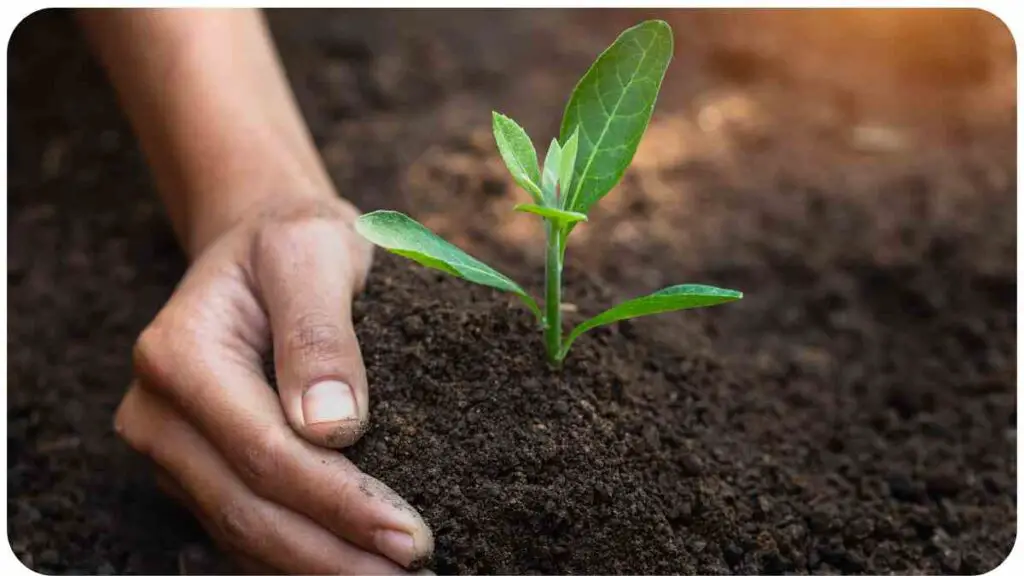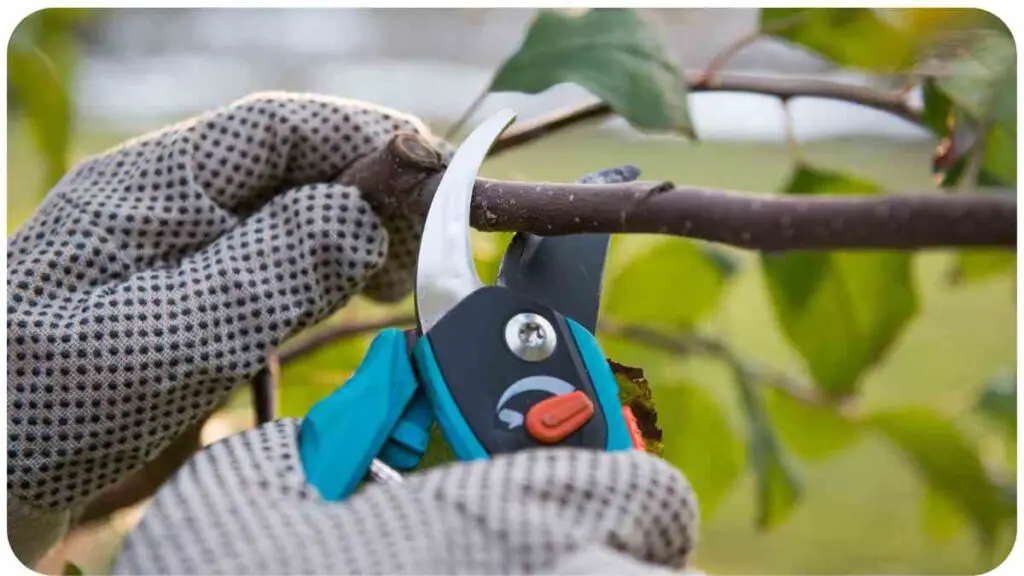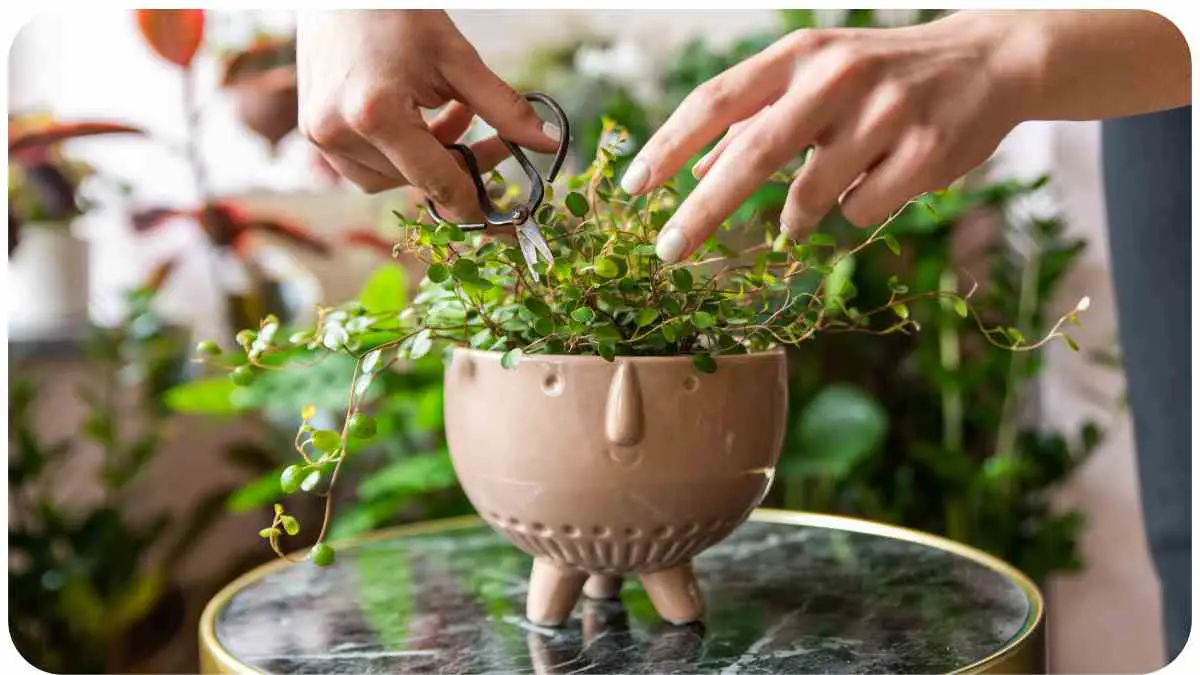Greeting fellow garden enthusiasts! There’s nothing quite as disheartening as discovering yellow leaves among your beloved garden plants.
Don’t let these yellowed leaves dampen your gardening spirit. In this comprehensive guide, we will explore the intricacies of diagnosing and remedying this issue to restore the vibrant health of your plants. Drawing from my extensive experience and expertise, I’ve assembled actionable advice, personal anecdotes, and data-rich tables to ensure your gardening success.
| Actionable Insights and Takeaways |
|---|
| 1. Diagnose with Detail: When dealing with yellow leaves, investigate the specifics – from patterns to accompanying symptoms – to pinpoint the root cause accurately. |
| 2. Water Wisely: Understand the water needs of your various plants and adjust your watering routine accordingly. Overwatering and underwatering can both lead to yellow leaves. |
| 3. Nutrient Know-How: Maintain a well-balanced fertilization regimen to ensure your plants receive the essential nutrients they need for healthy growth and vibrant foliage. |
| 4. Pest and Disease Vigilance: Regularly inspect your plants for signs of pests and diseases. Swift action in identifying and addressing issues can prevent widespread yellowing. |
| 5. Sunlight Savvy: Provide the appropriate amount of sunlight for each plant type. Too much or too little sunlight can contribute to yellow leaves. |
| 6. Pruning Power: Embrace proper pruning practices to enhance plant structure, airflow, and overall health. |
| 7. Adapt and Learn: Gardening is a journey of trial and error. Draw from your experiences and continuously adapt your care routines to achieve thriving plants. |
| 8. Long-Term Commitment: Sustaining a healthy garden requires ongoing dedication. Regularly monitor your garden’s health and make adjustments as needed. |
| 9. Holistic Approach: Remember that yellow leaves are often a symptom of an underlying issue. Address the root cause to enjoy lasting results. |
| 10. Nurturing Connection: Engage with your garden on a deeper level. Through care and attention, you’ll develop a stronger bond with your green companions. |
Understanding Yellow Leaves: Causes and Significance
Yellow leaves can be a distress signal from your plants, indicating a range of potential problems. From nutrient deficiencies to environmental stressors, the causes are multifaceted. Let’s delve into some common culprits behind these worrisome yellow leaves.
When it comes to maintaining your garden, you might wonder how to disinfect artificial grass effectively. Explore methods to ensure a clean and sanitized outdoor space.
Table: Common Causes of Yellow Leaves
| Cause | Description |
| Nutrient Deficiency | Lack of essential nutrients like nitrogen, iron, or magnesium can result in yellowing. |
| Overwatering/Underwatering | Improper watering can lead to root issues, hindering nutrient uptake and causing yellowing. |
| Poor Soil Drainage | Waterlogged soil deprives roots of oxygen, leading to stress and yellow leaves. |
| Pest Infestations | Insects like aphids, spider mites, and mealybugs can damage leaves and cause discoloration. |
| Disease Presence | Fungal or bacterial infections can lead to yellow spots or patches on plant leaves. |
Assessing Your Garden’s Soil Health

To get to the root of the problem (pun intended), examine your garden’s soil health. Soil pH plays a pivotal role in nutrient availability, affecting your plants’ overall vitality.
Maintaining the beauty of your garden includes cleaning artificial grass the right way. Learn easy and effective techniques for a pristine outdoor look.
Table: Soil pH Preferences of Popular Plants
| Plant | Ideal Soil pH Range |
| Roses | 6.0 – 6.5 |
| Blueberries | 4.5 – 5.5 |
| Tomatoes | 6.2 – 6.8 |
| Rhododendrons | 4.5 – 6.0 |
| Spinach | 6.5 – 7.5 |
Navigating Watering Practices for Plant Vitality
Watering is an art, and striking the right balance is crucial for your plants’ well-being. Overwatering can suffocate roots, while underwatering leads to dehydration.
Table: Watering Guidelines for Different Plant Types
| Plant Type | Watering Frequency | Soil Moisture Level |
| Succulents | Infrequent, deep watering | Allow soil to dry completely between waterings |
| Herbs | Regular, moderate watering | Keep soil evenly moist |
| Tropical Plants | Frequent, consistent watering | Maintain slightly damp soil |
| Veggies | Regular, even watering | Consistently moist soil |
| Trees | Deep, infrequent watering | Water deeply but infrequently |
Sunlight Exposure: Balancing Act for Plant Health
Just like we need a good dose of Vitamin D, plants thrive on sunlight. However, too much or too little can lead to yellowing leaves.
Table: Sunlight Requirements for Various Plants
| Plant | Sunlight Preference |
| Cacti | Full sun |
| Ferns | Indirect, filtered light |
| Peppers | Full sun to partial shade |
| Hostas | Shade to partial shade |
| Roses | Full sun |
Remember, each plant is unique, so observe and adjust sunlight exposure accordingly.
Pests and Diseases: Identifying and Addressing Issues
Pests and diseases can be sneaky adversaries in your garden, leading to yellow leaves and overall decline. Swift identification and action are essential to mitigate their impact.
Have you ever wondered how long dogs should stay off fertilized grass? Discover insights to keep your furry friends safe and your garden thriving.
Table: Common Garden Pests and Diseases
| Pest/Disease | Symptoms | Treatment and Prevention |
| Aphids | Curling leaves, sticky residue | Spray with soapy water, encourage beneficial insects |
| Powdery Mildew | White powdery spots | Improve air circulation, use fungicidal spray |
| Spider Mites | Fine webbing, stippled leaves | Spray with neem oil, maintain humidity |
| Leaf Spot | Dark spots with yellow halos | Prune affected leaves, avoid overhead watering |
| Bacterial Blight | Yellowing, water-soaked spots | Remove affected parts, avoid overhead watering |
Fertilization Fundamentals: Nutrient Boosts for Plants
Just as we need a balanced diet, so do our plants. Fertilization provides the necessary nutrients for robust growth and vibrant foliage.
Table: Essential Nutrients and Their Roles
| Nutrient | Role in Plant Health | Signs of Deficiency |
| Nitrogen | Promotes leaf and stem growth | Pale, yellow leaves |
| Phosphorus | Supports root development | Slow growth, purple leaves |
| Potassium | Enhances overall vigor | Browning leaf edges |
| Iron | Aids in chlorophyll production | Yellowing between veins |
| Calcium | Strengthens cell walls | Blossom end rot in fruits |
Pruning Pointers: Shaping and Strengthening Your Garden

Pruning is a chore often met with hesitation, but it’s a vital practice to maintain plant structure and health.
Table: Pruning Calendar for Ornamental Plants
| Plant | Best Pruning Time |
| Roses | Spring before new growth |
| Hydrangeas | After blooming in summer |
| Fruit Trees | Winter or early spring |
| Shrubs | Late winter or early spring |
| Perennials | Fall or early spring |
Personal Insights: Trials and Triumphs in Plant Care
I’ve faced my fair share of challenges as a dedicated gardener. Once, my rose bushes suffered from yellowing leaves due to poor drainage. Swiftly adjusting their soil mix and drainage, along with some targeted pruning, rejuvenated their health. These experiences taught me the value of adaptability and resilience in the face of plant troubles.
Dealing with unwanted vegetation? Explore alternatives that quickly kill grass and weeds without harming your garden environment.
1Sustaining Your Garden’s Health: Long-Term Strategies
Maintaining a lush, green garden requires ongoing commitment. Regularly monitor soil health, adjust watering routines, and stay vigilant against pests and diseases. Remember, your plants are living beings that respond to care and attention.
Conclusion
Gardening is a journey of discovery, growth, and nurturing. By understanding the intricacies of yellow leaves, we’ve equipped ourselves with the tools needed to transform a garden from lackluster to thriving.
With a blend of expertise, experience, and a dash of personal anecdotes, this guide aimed to provide actionable solutions to common gardening woes. So, let’s nurture our green havens, embrace the challenges, and relish the rewards of a flourishing garden.
With a solid grasp of the causes and solutions for yellow leaves, you’re now prepared to rescue your garden from this unsightly ailment. By incorporating the knowledge shared here, you’ll not only witness the resurgence of vibrant foliage but also cultivate a deeper connection with the green wonders that grace your outdoor sanctuary. Happy gardening! 🌱🌼🌿
Reviving wilting plants can be a challenge, but this troubleshooting guide offers practical steps to help your plants recover and thrive again
Further Reading
For more in-depth insights into tackling yellow leaves on your garden plants, consider exploring these valuable resources:
- Why Outdoor Plant Leaves Turn Yellow – The Spruce: This comprehensive guide dives into the various factors that contribute to yellowing leaves and offers practical solutions to address them.
- Why Plant Leaves Turn Yellow and How to Fix Them – Pennington: Pennington provides a detailed breakdown of nutrient deficiencies, watering issues, and other causes of yellow leaves, along with actionable steps to remedy the situation.
- Yellow Leaves on Plants: Why It Happens and How to Fix It – House Beautiful: House Beautiful explores the aesthetic and health aspects of yellow leaves, giving you a holistic perspective on plant care.
FAQs
Why do plant leaves turn yellow?
Plant leaves turn yellow due to a variety of factors, including nutrient deficiencies, improper watering, pests, diseases, and more. Understanding the specific cause is essential for effective treatment.
How can I determine if my plants need more water?
To determine if your plants need more water, insert your finger about an inch into the soil. If it feels dry, it’s time to water. If it’s still moist, hold off on watering to avoid overhydration.
What should I do if my plant’s leaves have yellow spots?
Yellow spots on plant leaves can be indicative of fungal or bacterial infections. To address this, remove the affected leaves promptly, ensure proper airflow, and consider using organic fungicides.
Can over-fertilization cause yellow leaves?
Yes, over-fertilization can lead to yellow leaves. Excessive nutrients can disrupt the balance of essential elements in the soil, resulting in nutrient imbalances and leaf discoloration.
How can I prevent yellow leaves in the future?
Preventing yellow leaves involves maintaining proper watering practices, providing adequate sunlight, regular inspection for pests and diseases, using balanced fertilizers, and ensuring proper soil drainage.
Are yellow leaves always a sign of a problem?
Not always. In some cases, yellow leaves can be a natural part of a plant’s growth cycle. However, if the yellowing is widespread and accompanied by other symptoms, it’s important to investigate and address the issue.
Should I prune yellow leaves?
Yes, pruning yellow leaves can help redirect the plant’s energy toward healthier growth. Remove the affected leaves to prevent the spread of disease and to improve the overall appearance of the plant.
How long does it take for plants to recover from yellow leaves?
The recovery time varies based on the cause and the plant type. With proper care and treatment, you might start to see improvements within a few weeks to a couple of months. Patience and consistent care are key.
Can yellow leaves be a sign of too much sunlight?
Yes, excessive sunlight can lead to sunburn and cause leaves to turn yellow. Some plants prefer indirect or filtered light, so it’s crucial to provide the right amount of sunlight based on the plant’s requirements.
Is it possible to save a plant with severe yellowing?
In some cases, it might be challenging to save a plant with severe yellowing, especially if the underlying issues have persisted for a long time. However, taking immediate corrective measures and providing optimal care can increase the chances of recovery.

Hi! My name is Hellen James, and I’m here to help you with your home-maintenance needs. Whether it’s building a better yard or just trying to fix a garden—I can show you how.


